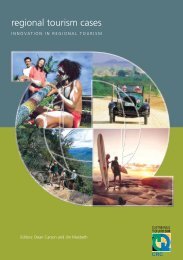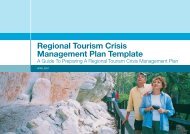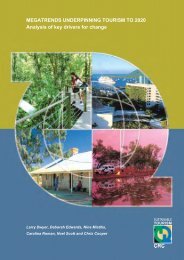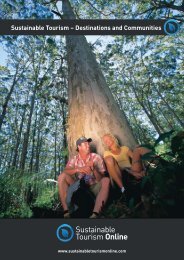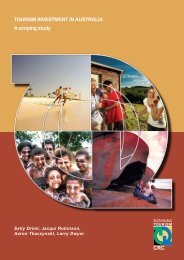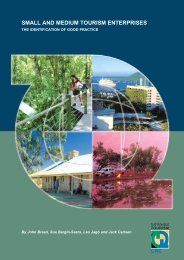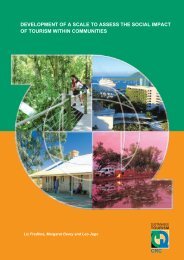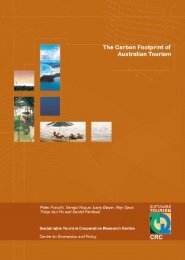Tourism Risk Management - Sustainable Tourism Online
Tourism Risk Management - Sustainable Tourism Online
Tourism Risk Management - Sustainable Tourism Online
You also want an ePaper? Increase the reach of your titles
YUMPU automatically turns print PDFs into web optimized ePapers that Google loves.
A National <strong>Tourism</strong> Safety and Security Plan<br />
As tourism is so critical to national economies it should be developed and managed as a matter of<br />
priority, and the development of a National <strong>Tourism</strong> Safety and Security Plan is recommended as a<br />
measure to achieve this. The plan should address the following main areas:<br />
• potential risks to tourism;<br />
• detection and prevention of offences against visitors;<br />
• protection of visitors and residents from illicit drug trafficking;<br />
• protection of visitor sites and facilities against unlawful interference;<br />
• guidelines for operators of visitor facilities in the event of such interference;<br />
• media management;<br />
• information to be provided to the international travel trade on safety and security issues;<br />
• crisis management;<br />
• safety standards and practices in visitor facilities and sites including fire protection, theft,<br />
sanitary and health requirements;<br />
• development of liability rules in visitor establishments;<br />
• safety and security aspects of licensing for accommodation establishments, restaurants, taxi<br />
companies, and tour guides;<br />
• documentation and information on visitor safety to the public, for both outgoing and incoming<br />
travellers;<br />
• national policies on visitor health, including reporting systems for health problems of visitors;<br />
• visitor insurance and travel assistance insurance; and<br />
• research statistics on crimes against travellers.<br />
Whilst in some countries these responsibilities are undertaken by national tourism authorities, other<br />
government agencies and key tourism industry groups should be involved as a major crisis will<br />
require a coordinated effort by them all.<br />
A National <strong>Tourism</strong> Incident Response Plan<br />
Developed following the events of September 11 and updated in April 2005, the Australian National<br />
<strong>Tourism</strong> Incident Response Plan establishes a response framework and actions for the National,<br />
State and Territory governments to pursue in cooperation with industry to ensure rapid, detailed and<br />
targeted responses to incidents with a national impact of the tourism industry. The plan addresses<br />
incident monitoring and management and recovery and recognizes the importance of close<br />
collaboration between governments and industry when responding to major incidents. It ensures that<br />
incidents with a national impact on the tourism industry are managed in a coordinated whole-ofgovernment<br />
way to minimize potential negative economic impacts to the industry. The Government is<br />
committed to working closely with industry to ensure the best possible outcome for the Australian<br />
tourism industry.<br />
The plan includes arrangements to:<br />
• communicate accurate and timely information to:<br />
o<br />
State, Territory and Australian governments and tourism organizations<br />
38 <strong>Tourism</strong> <strong>Risk</strong> <strong>Management</strong> – An Authoritative Guide to Managing Crises in <strong>Tourism</strong>



